The saga is coming to an end. This is the last installment about Nishi Ono Hachimangu, and unless I run out of other things to write about, it’s the last post about my April 30th bike trip through parts of rural Kitakyushu. We’ll look at some small outlying buildings and altars, as well as the forest setting of this shrine in one of the farming areas of Kokura-minami.
If you haven’t read the previous articles, especially the ones about this shrine—Nishi Ono Hachiman Shrine Posts 1, 2, and 3—you might want to follow some of these links: Introduction, Part 1: Snakes, Part 2: Not A Temple, Part 3: Frogs, Part 4: Farming Grannies, Part 5: Reservoir Mobs, Part 6: Dammed Rivers, Part 7: Sevenfold Waterfalls Post 1, and Post 2, and Part 8: Nishi Ono Hachiman Shrine Post 1, Post 2, and Post 3.
First up is the welcoming committee. This is the dragon-shaped purification fountain. Visitors are expected to rinse their hands—and sometimes their mouths, though the latter is no longer as common as it once was—before approaching the shrine deities. The water from the fountain flows into a stone basin that has a number of bamboo dippers. At this shrine the basin and fountain are in an open-sided shelter.
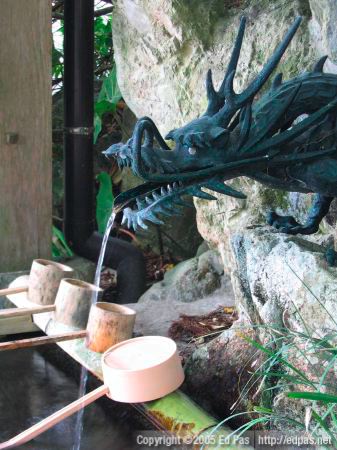
Moving along, we have a view from the front building, looking to the back of the compound on the left side of the main structures. Up some stairs is a small wooden altar.
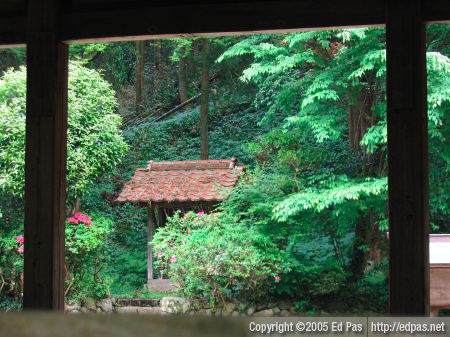
Here’s a close-up of the same altar. The stone walkway in front was damp from what I assume is spring water. This is the same water that the frogs were enjoying.
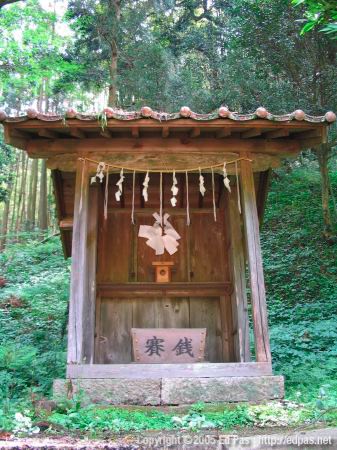
On the opposite side of the shrine buildings there were a couple of groups of small stone altars. The largest of these ones is approximately three feet tall. In front, on the right side is another wash basin, though the water looked quite stagnant. I don’t have any detail shots of these three altars.
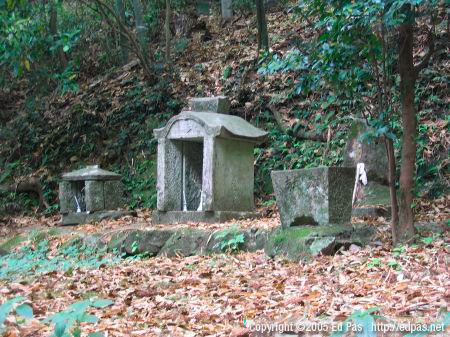
But I do have close-ups of two of the altars from another group. This one is about the same size as the tall one in the above photo. It has two chambers, with a simple stone figure, a paper charm, and what appears to be a sword-like item. Each open altar had a similar arrangement.
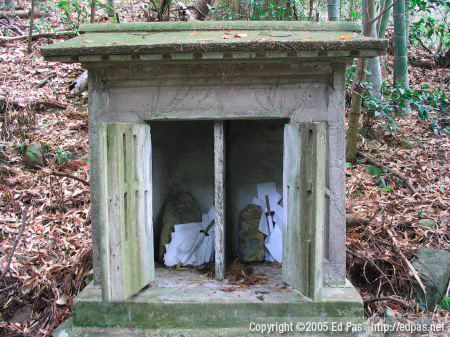
There was also this tiny altar—it might have been eighteen inches tall—which was completely closed. I’m not sure why. I took this shot mostly to get some perspective on the mixed forest.
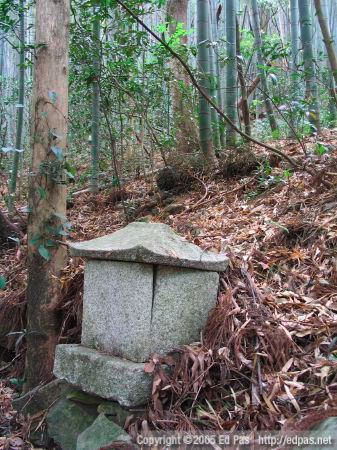
Here’s another view up the hill, this time from the front courtyard looking up in the direction of the altars in the last two pictures. The altar with two chambers is in the middle of the picture, between the two pine tree trunks. In the foreground is a rock garden of sorts, with a pond that looked like it had seen better days. It was choked with fallen leaves, and had barely any water in it. As I wrote in a previous post, the winters here are mild enough that most trees stay green all year, losing the previous year’s leaves in the spring when the new growth emerges. And unlike some of the managed forests I’ve encountered, it looks like this one has been allowed to grow without human intervention.
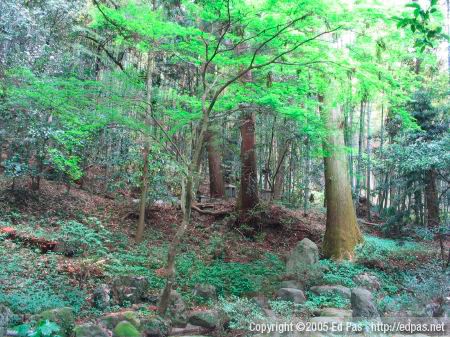
Next is another view, complete with blown out highlights and lens flare, of the forest and paths on the right side of the shrine. The narrow path slanting up to the right leads in the direction of the two groups of stone altars. The wide path leading to the left runs beside the shrine buildings and to the back where I found the frogs.
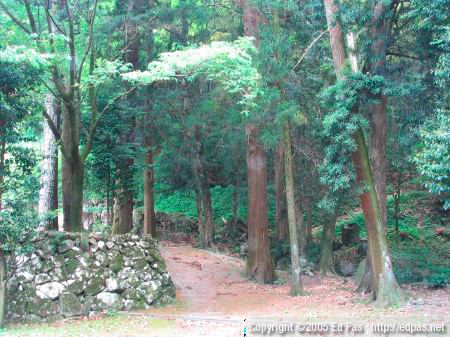
This close-up shows one of the plants that cover the hillside. It’s one of the biggest and least green samples of the plants that are covering the slopes in the above photo.
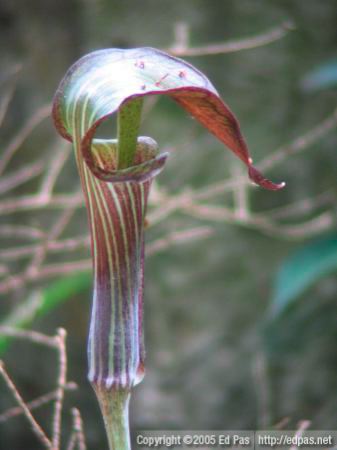
That’s it for the pictures but I’d like to write a bit about my impression of this shrine and of my cycling adventure in general. I’ve come to appreciate the shrines as oases of stillness and nature. Even in the most industrial sections of the city, there’s usually at least one torii leading to a tree-covered hillock. Inside the sacred grounds, it’s easy to forget the surrounding bustle of city life. Despite my initial observations that the Japanese like to make sure all nature is trimmed, tamed, and otherwise controlled, Shinto shrines show that this isn’t always the case. Aside from the actual shrine grounds, the trees and plants around the perimeter are often minimally groomed. And in contrast to the big “superstar” shrines, most of the smaller ones I’ve been to are virtually abandoned. Actually, abandoned is the wrong word. It’s obvious that someone has been maintaining them, but unlike the more famous or popular places, there’s seldom a huge crowd to wade through.
In writing this series, I realized that one of the things that I’m going to miss about Japan is all of these individual little worlds that are separated more by mental barriers than anything physical. Most of the people I know here wouldn’t dream of visiting more than one of these places in a single day yet many of them would think nothing of a shopping day trip that involves multi-mode transportation and a barrage of shops, each its own microcosm. Or three-day vacations overseas. Not to say that the latter are inferior pursuits, they simply inhabit a different part of the values continuum.
So there you have it. One day’s worth of biking and hiking, turned into almost two weeks worth of daily posts. If you want to read through this whole trip again, go back to the introduction and follow the links at the end of each post.
And seeing as it’s May 14th, I’d like to send a big Happy Birthday to a special young woman in Toronto.